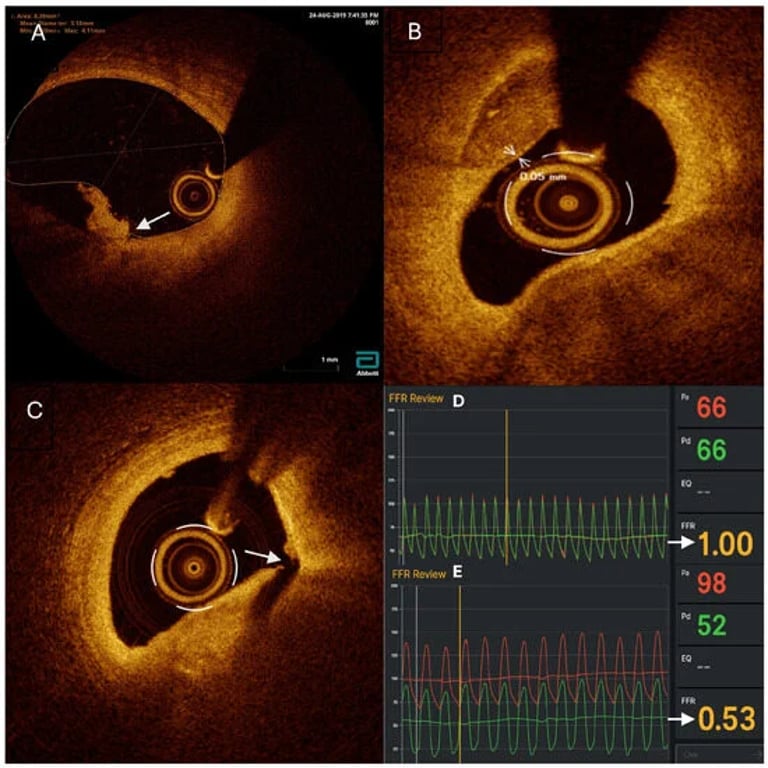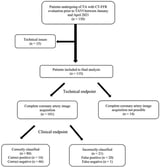OCT Enhances Stent Decisions in Multivessel Coronary Disease, Study Shows
August 19, 2024
A recent study evaluated the effectiveness of fractional flow reserve (FFR) and optical coherence tomography (OCT) in guiding therapeutic decisions for patients with multivessel coronary artery disease.
Thirty-six patients with acute coronary syndrome and multivessel disease were randomized into two groups: one utilizing FFR alone and the other employing both FFR and OCT.
Statistical analysis revealed a significant difference in decision changes between the two groups, with the FFR + OCT group demonstrating a higher rate of stenting based on OCT findings.
In the FFR group, only one case required stent optimization, compared to eight cases in the FFR + OCT group, indicating the added value of OCT in treatment planning.
The study highlights that OCT significantly increases the percentage of stenting procedures by identifying vulnerable lesions, potentially improving patient outcomes.
OCT imaging altered treatment decisions in 11 cases where FFR readings were above 0.8, emphasizing the importance of OCT in detecting high-risk lesions.
Another study evaluated the diagnostic performance of noninvasive computed tomography-derived fractional flow reserve (cFFR) compared to invasive coronary angiography (ICA) in detecting significant stenoses in patients with high coronary artery calcium (CAC) scores.
The findings indicated that both CCTA and cFFR had poor diagnostic accuracy in identifying ischemia-related lesions in patients with high CAC scores when compared to ICA.
Future studies are encouraged to assess the long-term clinical benefits and cost-effectiveness of integrating OCT into routine clinical practice.
The study underscores the significant contribution of atherosclerotic disease to heart failure, stroke, and myocardial infarction, affecting both quality of life and healthcare systems.
Advancements in CT technology, such as Photon-Counting Detector (PCD) CT and spectral CT, may improve diagnostic accuracy and image quality in the future.
Summary based on 3 sources
